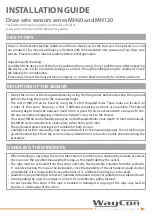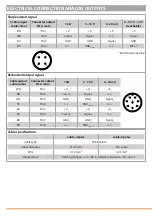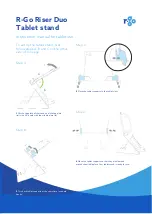
INSTALLATION GUIDE
Draw wire sensors series MH60 and MH120
For further information please see the data sheet at
www.waycon.biz/products/draw-wire-sensors
FIRST STEPS
WayCon Positionsmesstechnik GmbH would like to thank you for the trust you have placed in us and
our products. This manual will make you familiar with the installation and operation of our draw wire
sensors. Please read this manual carefully before initial operation!
Unpacking and checking:
Carefully lift the device out of the box by grabbing the housing. Do not pull the rope. After unpacking
the device, check it for any visible damage as a result of rough handling during the shipment. Check
the delivery for completeness.
If necessary consult the transportation company, or contact WayCon directly for further assistance.
MOUNTING OF THE SENSOR
• Mount the sensor at the designated place by using the fixing holes before extracting the rope and
before attaching the rope to the measuring target.
• The sensor MH120 can be fixed by using the 4 x M4 threaded holes. These holes are located on
2 sides of the sensor housing, so that 2 different mounting positions are available. The thread
screwing depth should be between 4 and 6 mm. A good fit can be achieved with a torque of 4 Nm.
We also recommend applying a “medium-strength” screw lock to the thread.
• The sensor MH60 can be fixed by using the 2 x M4 threaded holes (max. depth 10 mm). Additionally,
the MH60 can be attached via a base plate with 2 holes (ø 4.5 mm)
• The perforated plate covering is not suitable for both sensors.
• Carefully extract the measuring rope now and attach it to the measuring target. Do not let the rope
go while extracting it from the sensor and pay attention not to bend or buckle the rope during the
procedure.
HANDLING THE WIRE ROPE
• When installing or operating the sensor, take care not to let the rope snap back by mistake or extract
the rope over the specified measurement range, as this might destroy the sensor.
• The rope must be extracted from the sensor vertically. The maximum variation from the vertical is
3°. Avoid extracting the rope at an inclination, since the durability of the instrument would shorten
considerably. If it is not possible to keep the limit of 3°, a deflection pulley has to be used.
• Guide the rope preferably in corners or guarded in channels to prevent pollution or accidental touch.
• Avoid guiding the rope over edges or corners. Use a deflection pulley instead.
• Do not operate the sensor if the rope is buckled or damaged. A ripping of the rope may lead to
injuries or a damaging of the sensor.






















